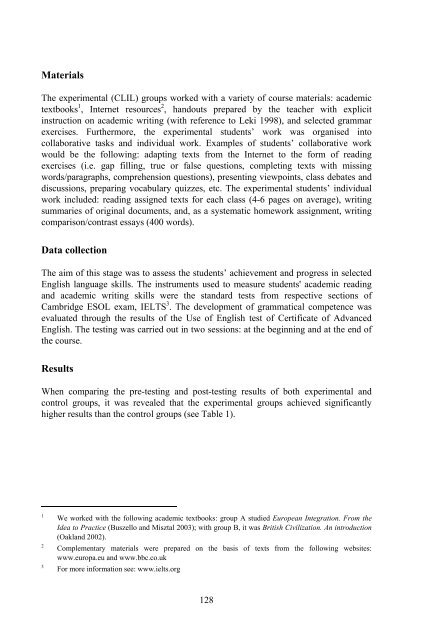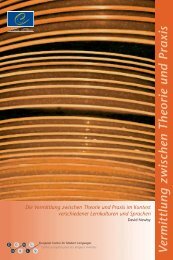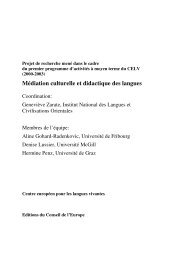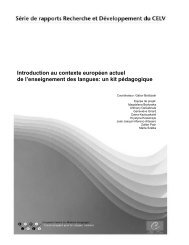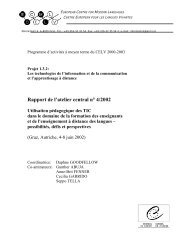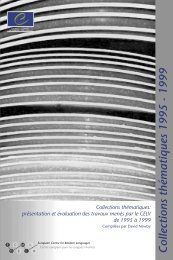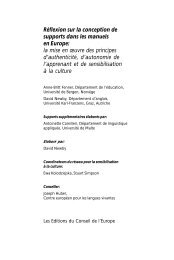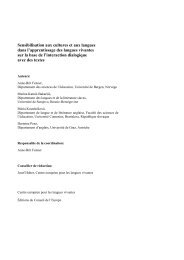cohesion - European Centre for Modern Languages
cohesion - European Centre for Modern Languages
cohesion - European Centre for Modern Languages
Create successful ePaper yourself
Turn your PDF publications into a flip-book with our unique Google optimized e-Paper software.
Materials<br />
The experimental (CLIL) groups worked with a variety of course materials: academic<br />
textbooks 1 , Internet resources 2 , handouts prepared by the teacher with explicit<br />
instruction on academic writing (with reference to Leki 1998), and selected grammar<br />
exercises. Furthermore, the experimental students’ work was organised into<br />
collaborative tasks and individual work. Examples of students’ collaborative work<br />
would be the following: adapting texts from the Internet to the <strong>for</strong>m of reading<br />
exercises (i.e. gap filling, true or false questions, completing texts with missing<br />
words/paragraphs, comprehension questions), presenting viewpoints, class debates and<br />
discussions, preparing vocabulary quizzes, etc. The experimental students’ individual<br />
work included: reading assigned texts <strong>for</strong> each class (4-6 pages on average), writing<br />
summaries of original documents, and, as a systematic homework assignment, writing<br />
comparison/contrast essays (400 words).<br />
Data collection<br />
The aim of this stage was to assess the students’ achievement and progress in selected<br />
English language skills. The instruments used to measure students' academic reading<br />
and academic writing skills were the standard tests from respective sections of<br />
Cambridge ESOL exam, IELTS 3 . The development of grammatical competence was<br />
evaluated through the results of the Use of English test of Certificate of Advanced<br />
English. The testing was carried out in two sessions: at the beginning and at the end of<br />
the course.<br />
Results<br />
When comparing the pre-testing and post-testing results of both experimental and<br />
control groups, it was revealed that the experimental groups achieved significantly<br />
higher results than the control groups (see Table 1).<br />
1<br />
We worked with the following academic textbooks: group A studied <strong>European</strong> Integration. From the<br />
Idea to Practice (Buszello and Misztal 2003); with group B, it was British Civilization. An introduction<br />
(Oakland 2002).<br />
2<br />
Complementary materials were prepared on the basis of texts from the following websites:<br />
www.europa.eu and www.bbc.co.uk<br />
3<br />
For more in<strong>for</strong>mation see: www.ielts.org<br />
128


